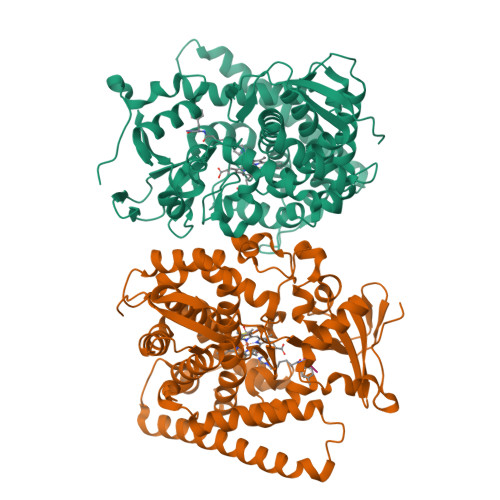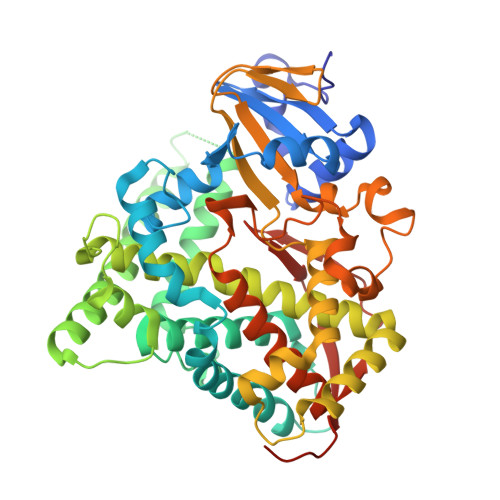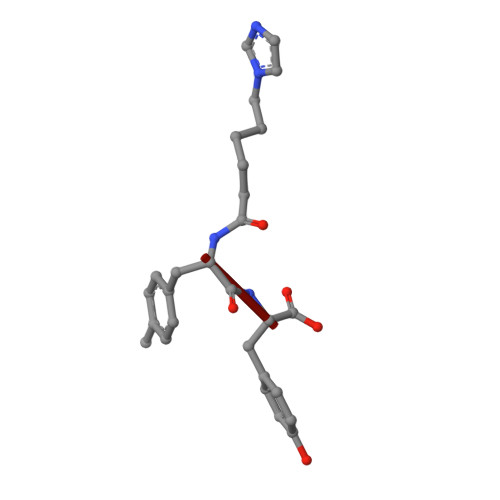Anchoring a Structurally Editable Proximal Cofactor-like Module to Construct an Artificial Dual-center Peroxygenase.
Qin, X., Jiang, Y., Yao, F., Chen, J., Kong, F., Zhao, P., Jin, L., Cong, Z.(2023) Angew Chem Int Ed Engl 62: e202311259-e202311259
- PubMed: 37713467
- DOI: https://doi.org/10.1002/anie.202311259
- Primary Citation of Related Structures:
7Y0T, 8HON, 8HOP, 8HOQ, 8HOR, 8HOS, 8HOU - PubMed Abstract:
A recent novel strategy for constructing artificial metalloenzymes (ArMs) that target new-to-nature functions uses dual-functional small molecules (DFSMs) with catalytic and anchoring groups for converting P450BM3 monooxygenase into a peroxygenase. However, this process requires excess DFSMs (1000 equivalent of P450) owing to their low binding affinity for P450, thus severely limiting its practical application. Herein, structural optimization of the DFSM-anchoring group considerably enhanced their binding affinity by three orders of magnitude (K d ≈10 -8 M), thus approximating native cofactors, such as FMN or FAD in flavoenzymes. An artificial cofactor-driven peroxygenase was thus constructed. The co-crystal structure of P450BM3 bound to a DFSM clearly revealed a precatalytic state in which the DFSM participates in H 2 O 2 activation, thus facilitating peroxygenase activity. Moreover, the increased binding affinity substantially decreases the DFSM load to as low as 2 equivalents of P450, while maintaining increased activity. Furthermore, replacement of catalytic groups showed disparate selectivity and activity for various substrates. This study provides an unprecedented approach for assembling ArMs by binding editable organic cofactors as a co-catalytic center, thereby increasing the catalytic promiscuity of P450 enzymes.
Organizational Affiliation:
CAS Key Laboratory of Biofuels and Shandong Provincial Key Laboratory of Synthetic Biology, Qingdao Institute of Bioenergy and Bioprocess Technology, Chinese Academy of Sciences, Qingdao, 266101, China.



















